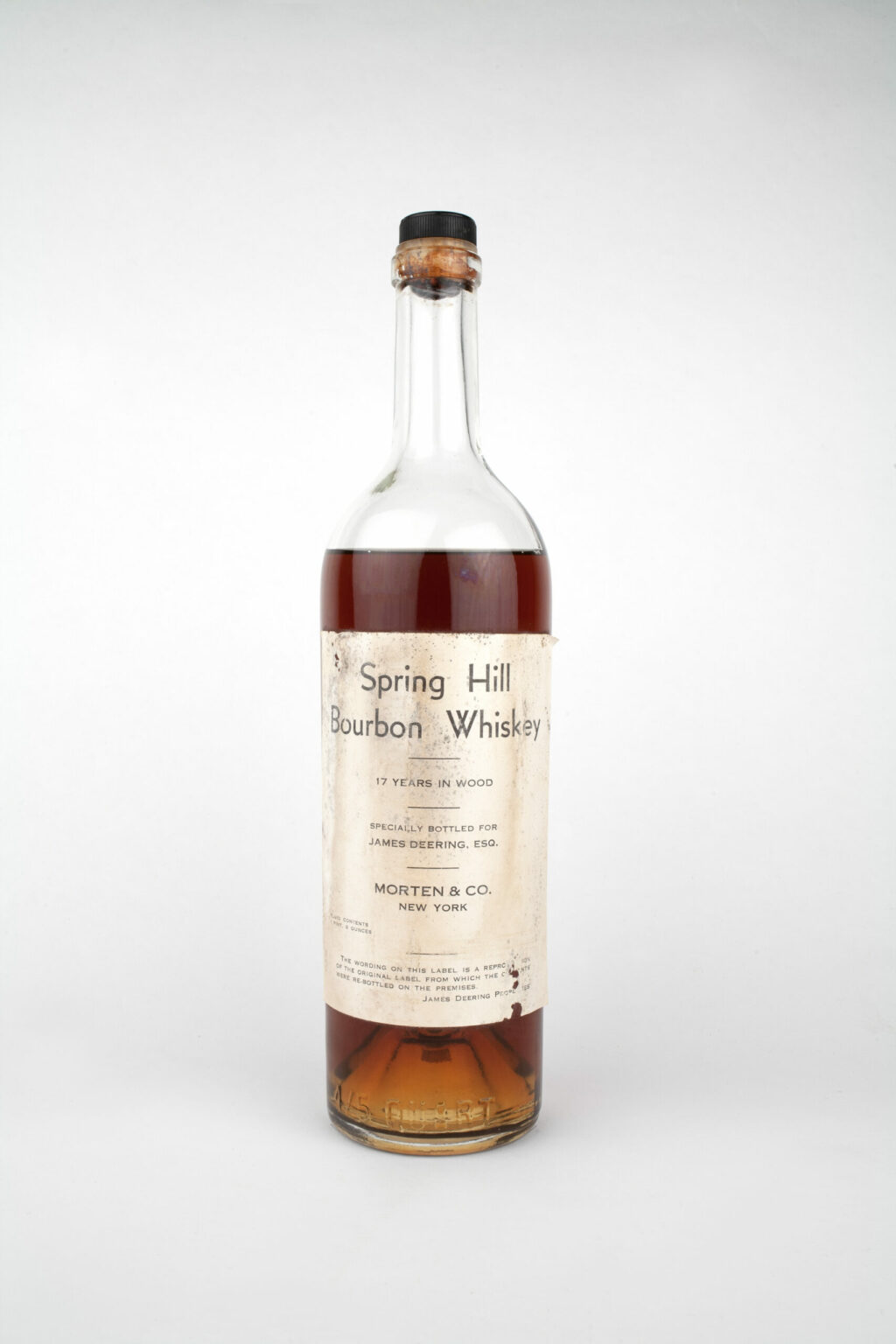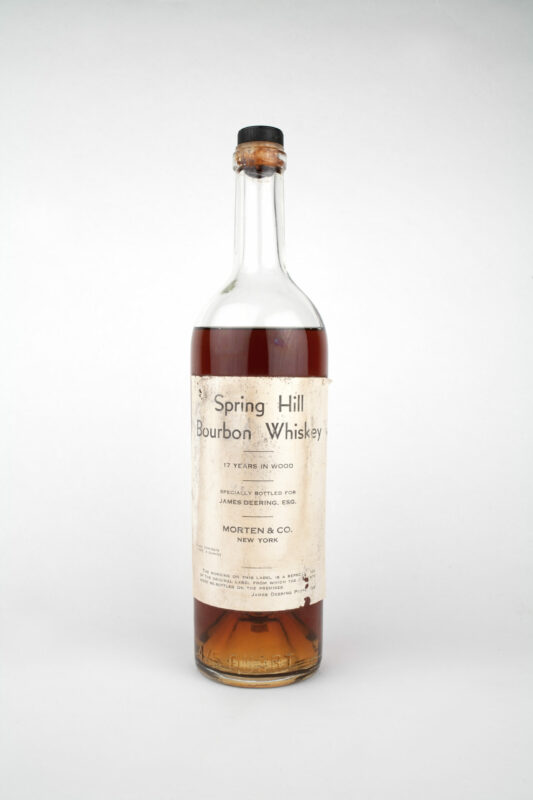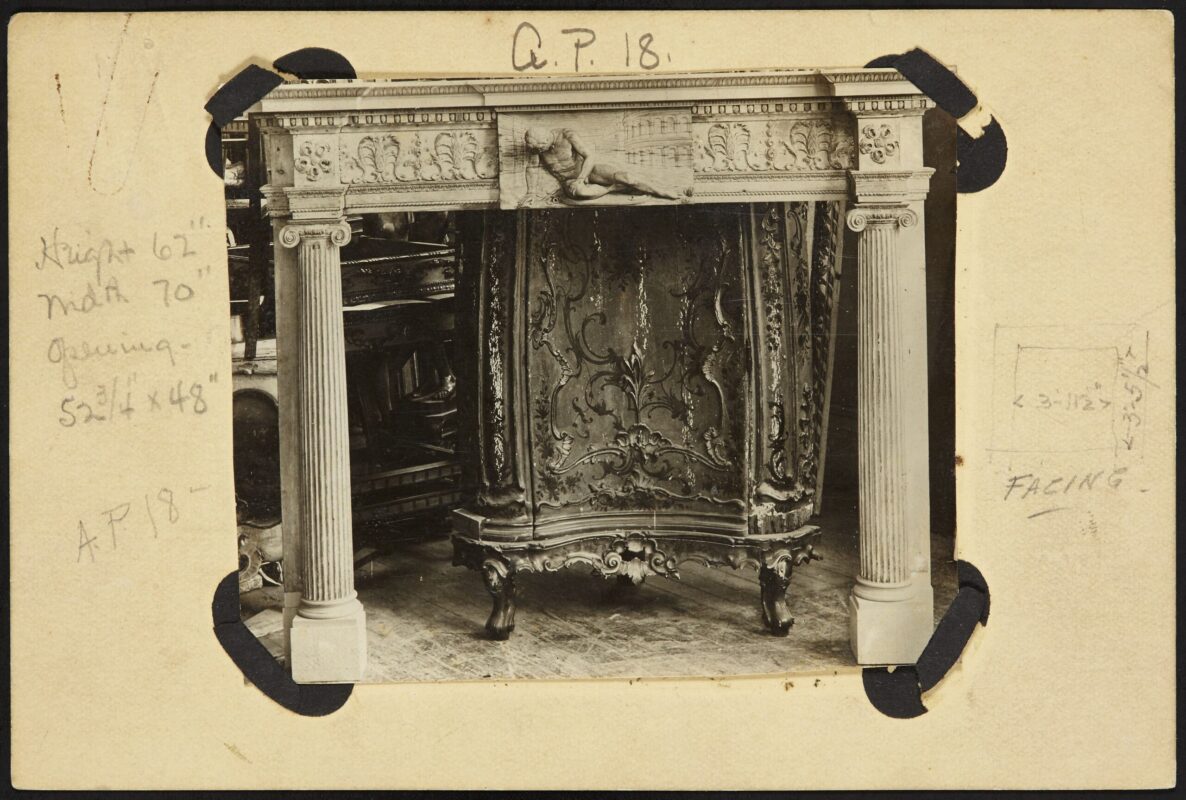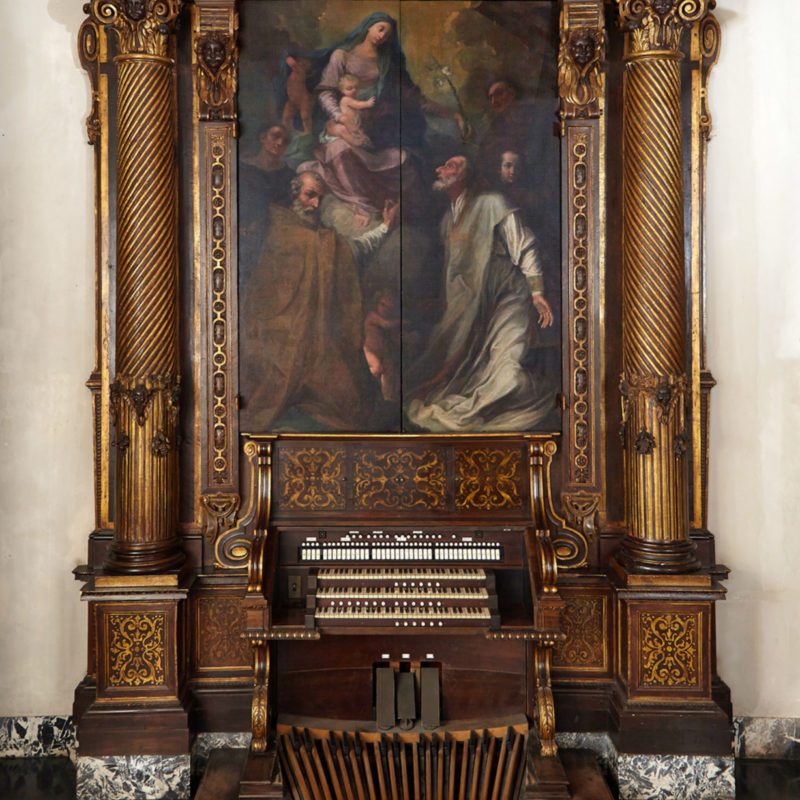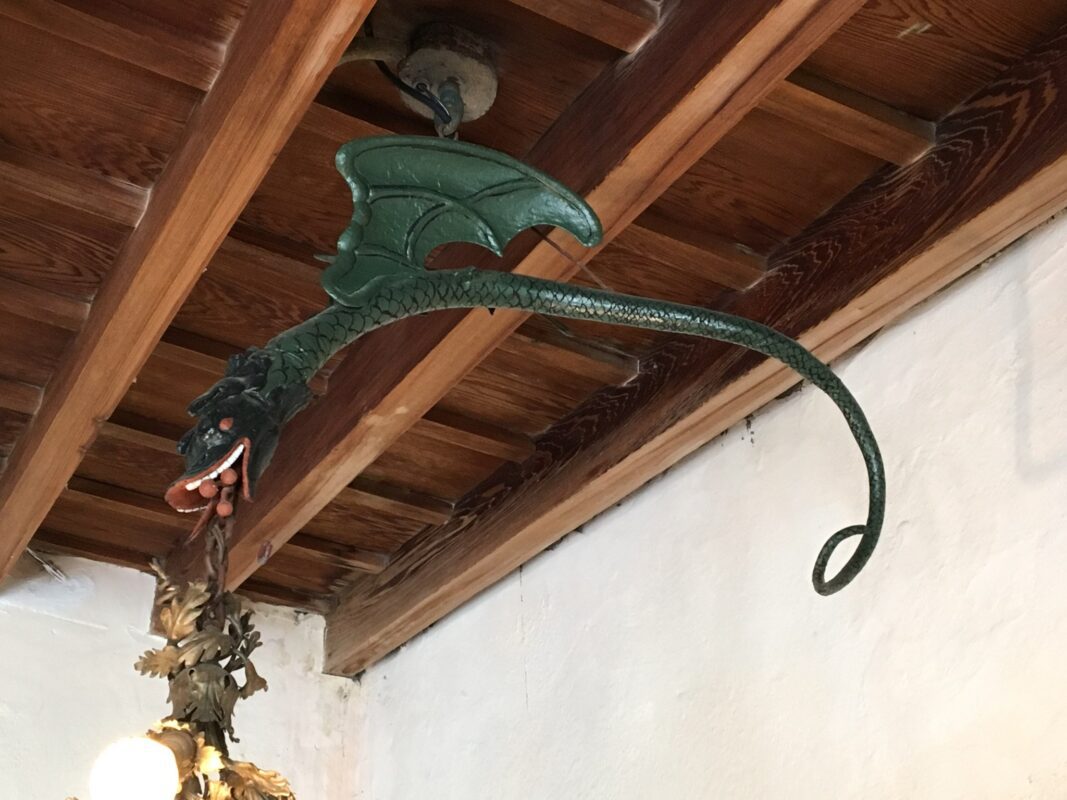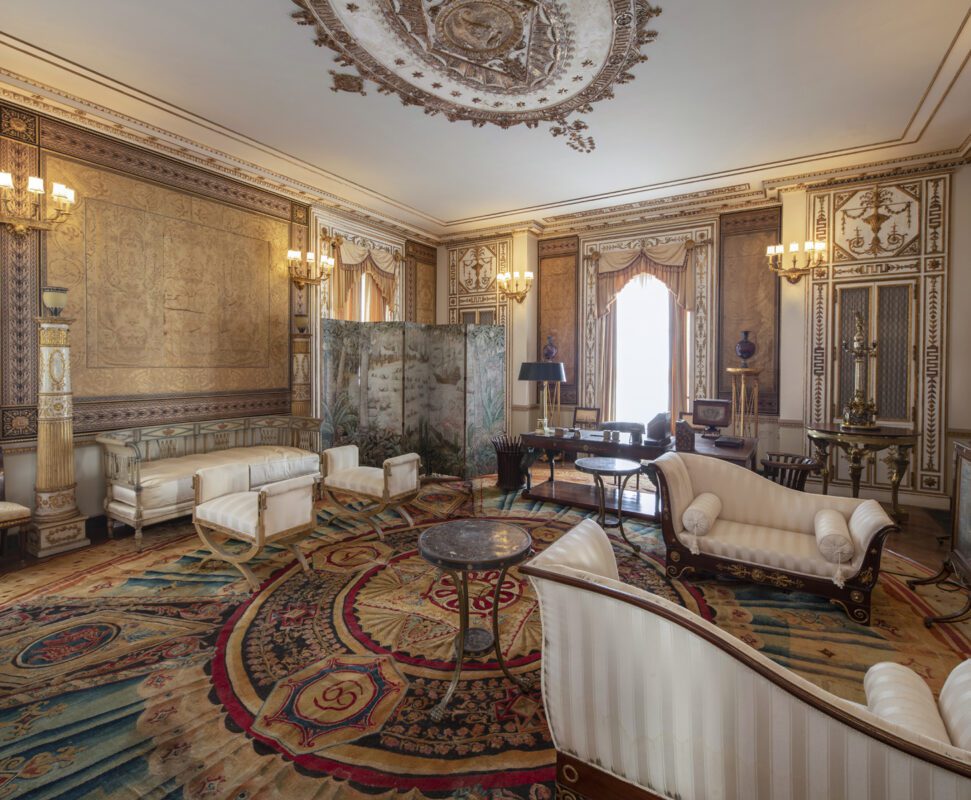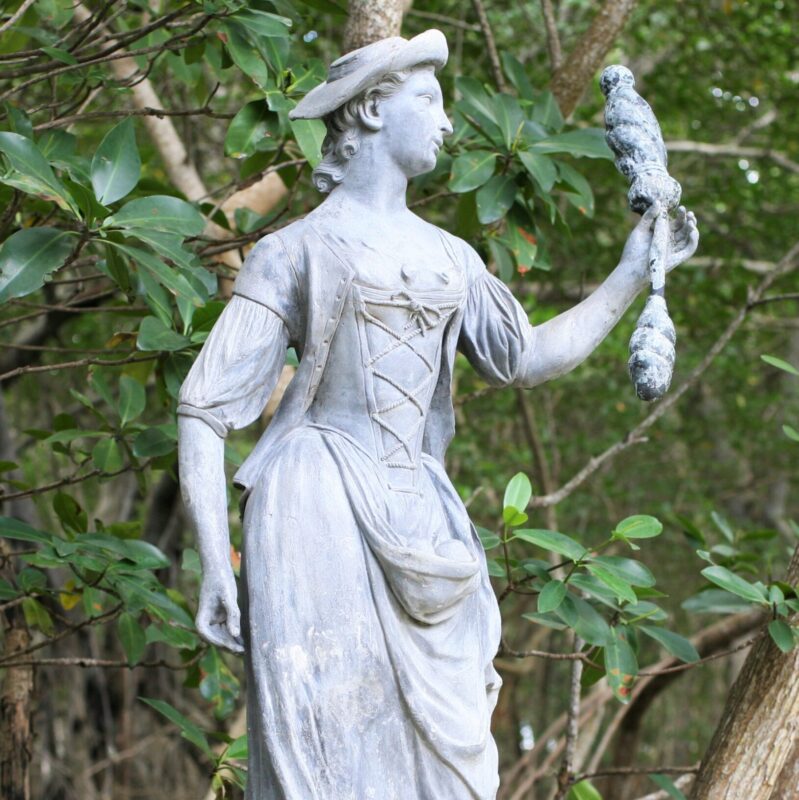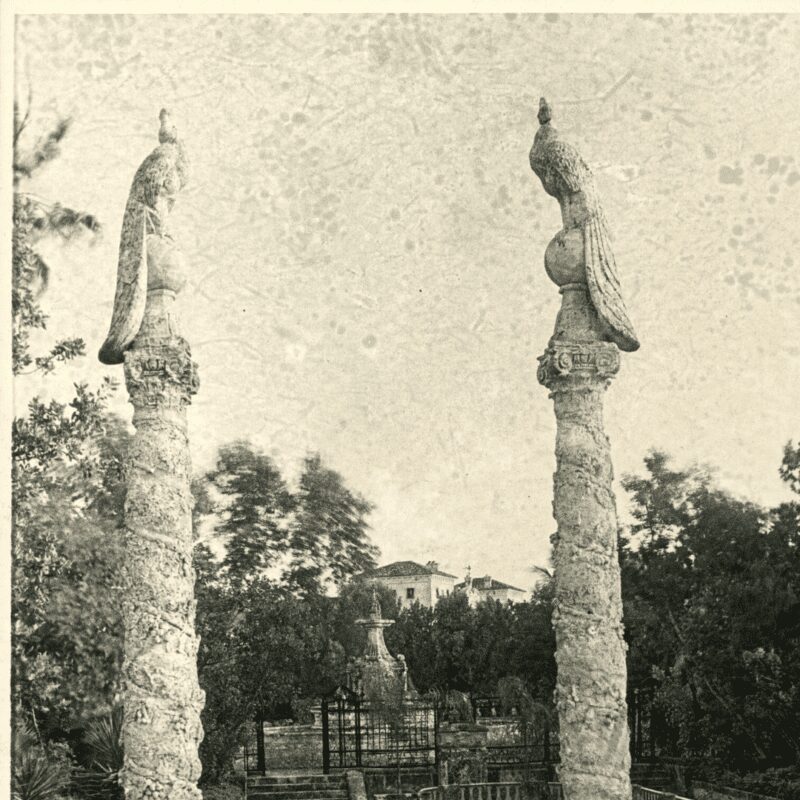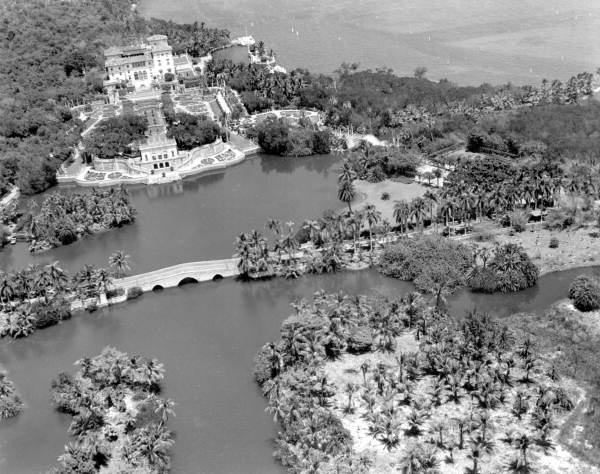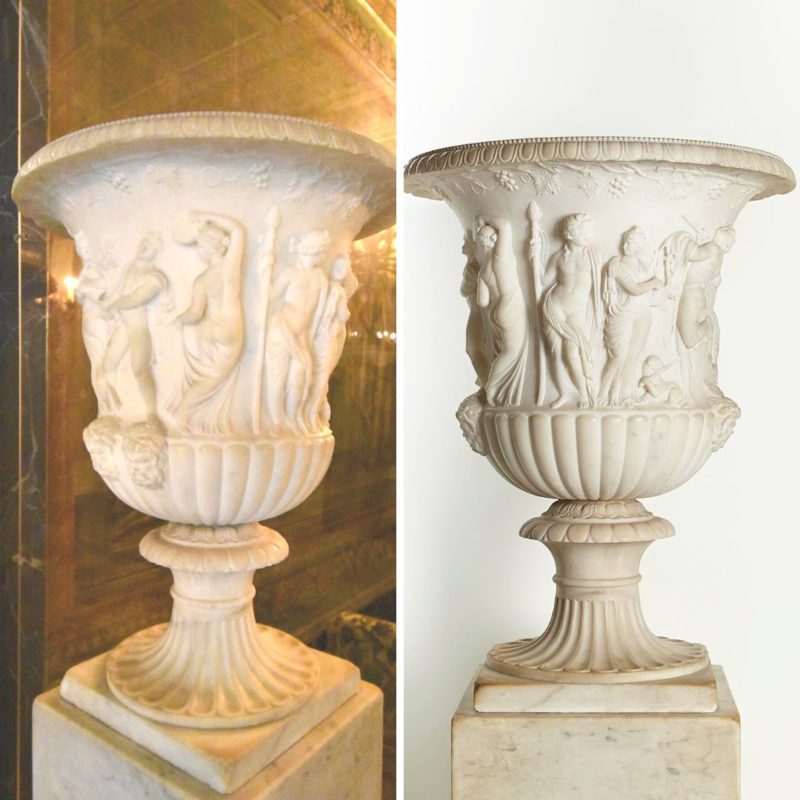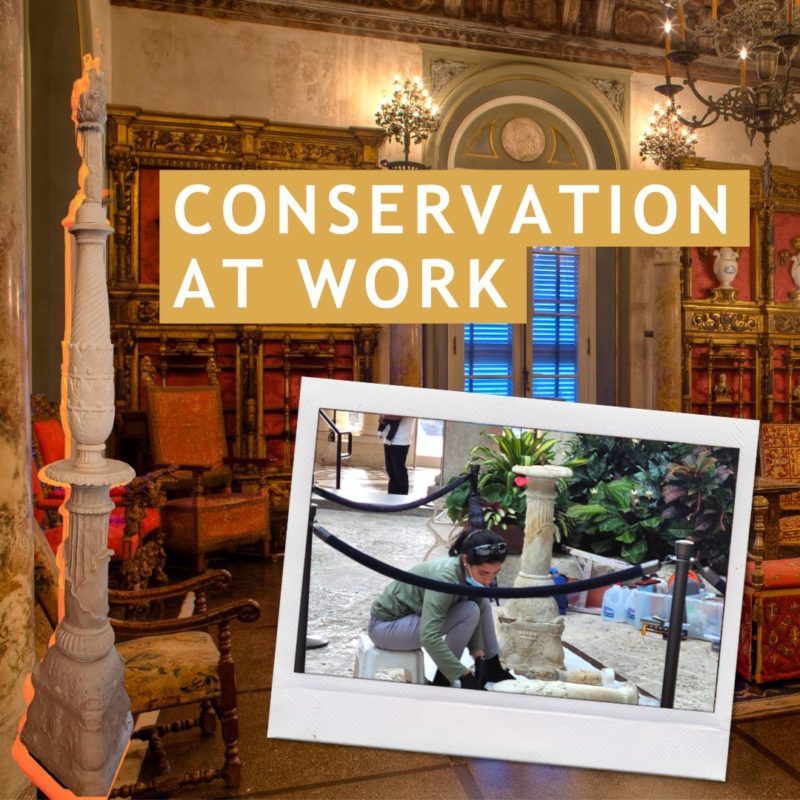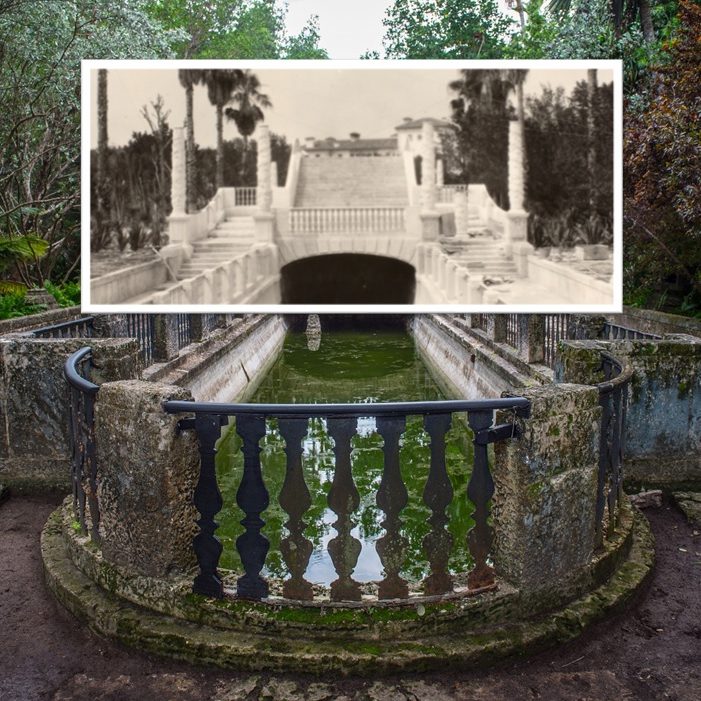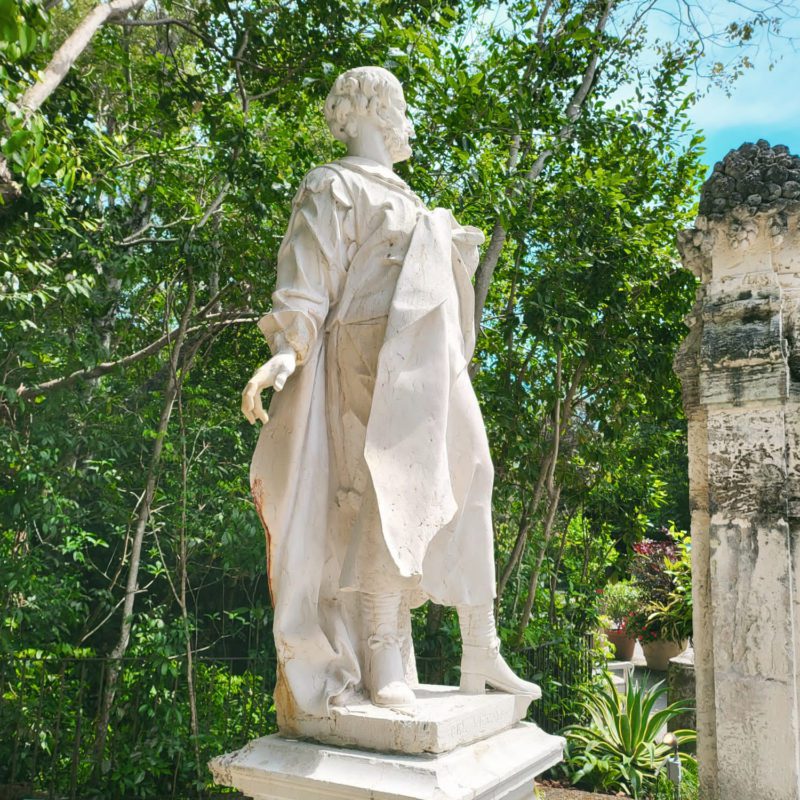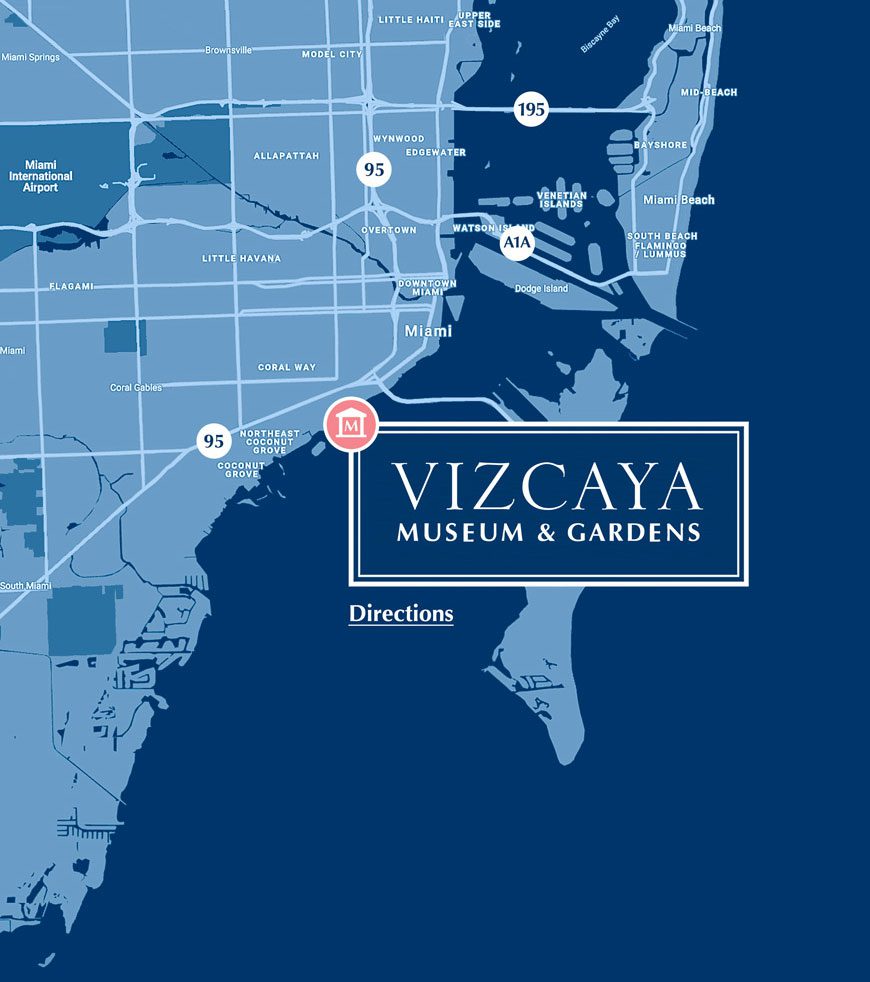Spring Hill Bourbon Whiskey. Vizcaya Museum and Gardens.
Despite having its most active years during the age of Prohibition, Vizcaya was anything but a dry estate. Archival purchase records and letters tell us that James Deering bought thousands of dollars’ worth of alcohol for Vizcaya and many original bottles remain in the collection today.
Despite bans on the transportation and sale of alcohol between 1920 and 1933, many wealthy and well-connected Americans found ways to circumvent local and national Prohibition laws. During this time, Florida was an important gateway for “rum running” with its proximity to the Caribbean Islands.Ships would head out from the nearby Island of Bimini and would transport rum to the numerous Florida speakeasies along the coastal areas.
Alcohol at Vizcaya
It is certain that Vizcaya’s unique construction and isolated location made it much easier for Deering to acquire his chosen spirits. Known for his opulent hospitality, Deering ensured that his guests enjoyed the finest food, wine and liquor, even though he had to abstain due to health issues.
This begs the question: how did James Deering maintain such a well-stocked bar during a time when the purchase and transportation of most alcohol was illegal? Perhaps unsurprisingly, the unique aspects of Vizcaya’s location and construction played a large role. Deering was a wealthy man and, especially at the beginning of Vizcaya’s construction years, had a near-constant flow of goods being shipped to him.
Acquiring the Goods
The need for goods and supplies led to the dredging of the Deering Channel in Biscayne Bay, still in use today. Deering used this channel to have deliveries brought to Vizcaya by ship, including large quantities of alcohol. As the cases of spirits traveled down the coastal waters of the eastern states, there was always a possibility that they could have been seized in any “dry” areas. The city of Miami was one of those areas, as it had been “dry” since 1913. Some archival letters refer to the alcohol being shipped as “comforters”, a code word to hide illegal activity while describing its effects on the drinker. It is said that the alcohol was brought to the Boat Landing at the back of the main gardens.
By 1920, as the National Prohibition Act went into effect, Deering had already amassed a substantial supply of spirits. After Deering’s passing in 1925, bottles remained hidden in Vizcaya’s cellars, later becoming the heirs’ property. The bottles could not be moved until December 1933, upon the repeal of national Prohibition. Several decades ago, Mrs. Richard Danielson returned some of Deering’s liquor collection to Vizcaya. These bottles have labels modified during a 1953 re-bottling, a task involving replicating labels, straining the spirits and recorking.

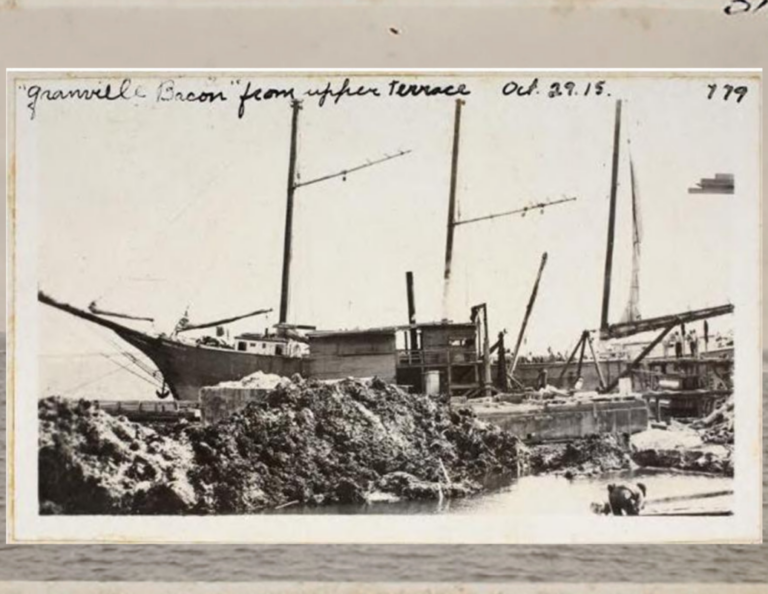
The Collection Today
Today, Vizcaya’s liquor collection consists of 190 bottles from James Deering’s original collection. The bottles were recently cataloged, cleaned, photographed, and rehoused in new archival boxes by Vizcaya’s Art and Artifact Stewardship team, assuring that this fascinating aspect of Vizcaya’s history will be preserved.
Images of the liquor collection and information about individual bottles will be available online in the Digital Collections section of Vizcaya’s website for research in the latter part of 2024.
This project has been made possible in part by a major grant from the National Endowment for the Humanities: Democracy demands wisdom.
Any views, findings, conclusions, or recommendations expressed in here, do not necessarily represent those of the National Endowment for the Humanities.
Support Vizcaya’s Conservation Efforts
Help Vizcaya continue to preserve its vast collection by making an online donation.
Together, we can safeguard this rich cultural heritage for future generations to explore and appreciate.


